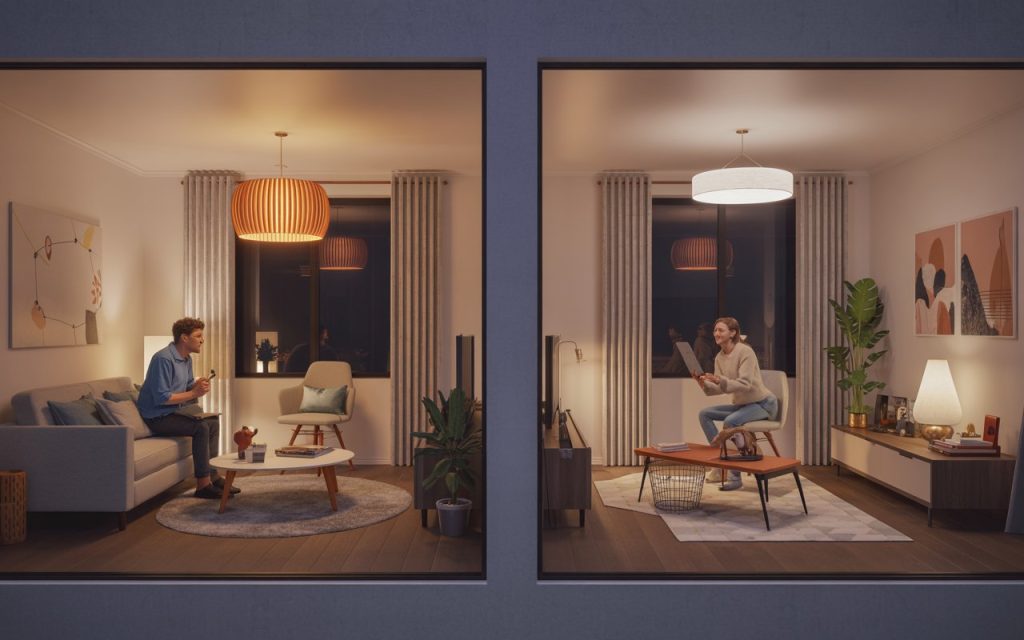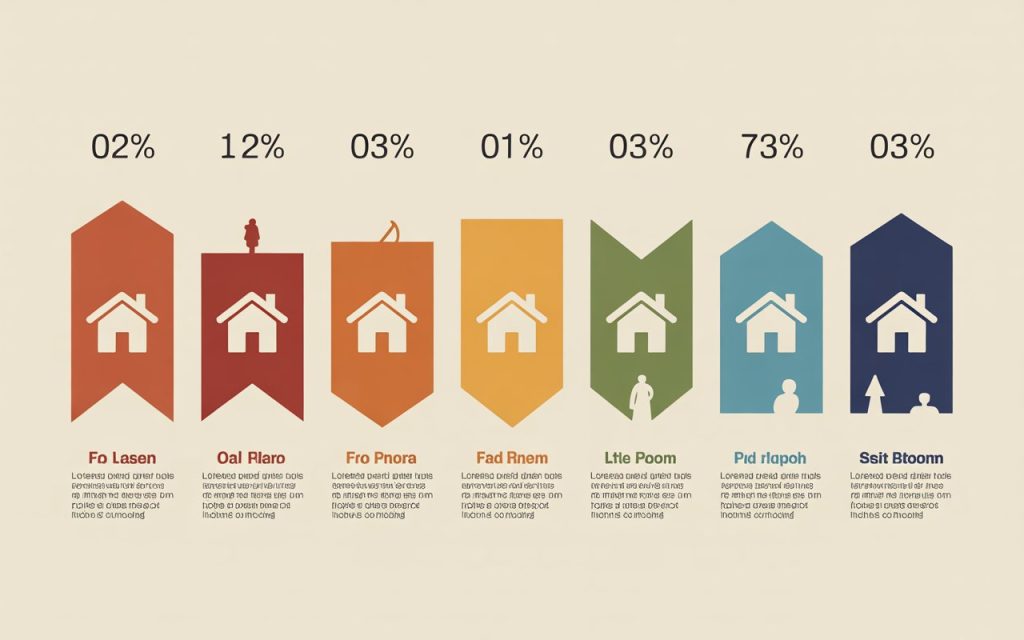The Surprising New Trend: Couples Living Apart

INTRODUCTION
In today’s fast-changing world, the idea of a “normal” relationship is evolving. More couples are choosing to stay committed while living in separate homes, a lifestyle often called “Living Apart Together” (LAT). This trend is not just about distance—it’s about redefining what partnership means. People are realizing that love and togetherness do not always require sharing the same roof.
Some partners live apart by choice, valuing their independence, personal space, and the ability to focus on their own goals. Others are separated by work, family, or cultural reasons, but still maintain strong emotional bonds. T

echnology has made it easier than ever to stay connected, even when miles apart. As society becomes more open-minded, couples are finding new ways to build happy, healthy relationships that fit their unique needs.
Living apart can offer freedom, reduce daily stress, and help partners appreciate each other more. However, it also brings challenges like loneliness, extra costs, and the need for strong communication. This lifestyle is gaining attention worldwide, with millions of couples embracing it for reasons ranging from career demands to personal growth. Whether temporary or permanent, living apart together is reshaping how people think about love, family, and commitment
What Does Living Apart Together Mean?

LAT describes couples who are in a serious relationship but do not share a home. They might be married, engaged, or dating, but each person keeps their own residence. Some live in the same city, others in different regions or countries. This setup can be temporary or long-term, depending on personal needs.
Key Features
- Separate homes: Each person has their own space.
- Commitment: The relationship is serious and based on trust.
- Flexibility: Partners decide how often to meet and how to manage their schedules.
- Independence: Each manages their own routines and daily life.
- Personalized arrangements: Some live apart for months, others for years, and some never plan to live together.
Why Is This Lifestyle Becoming Popular?

Autonomy
- Many value independence and personal routines.
- Having control over one’s environment reduces stress.
Professional Demands
- Careers in different locations can make cohabitation difficult.
- Remote work and global jobs make distance more manageable.
Financial or Family Reasons
- Financial limits, visa issues, or children from previous relationships can make separate homes practical.
- Avoids conflicts over money, chores, or parenting.
Personal Space
- Privacy and freedom are easier to maintain.
- Reduces stress and prevents small arguments from escalating.
Quality Time
- Time together feels more special and intentional.
- Absence can deepen appreciation.
Changing Social Norms
- Society is more open to non-traditional relationships.
- Media and celebrities have helped normalize different relationship styles.
Other Reasons
- Health or care needs
- Cultural or religious beliefs
- Desire to avoid routine
- Focus on personal growth
Types of Living Apart Arrangements
| Arrangement Type | Description | Challenges | Benefits | Example Scenario |
|---|---|---|---|---|
| Apart, but sadly | Forced by work, family, or legal reasons | Loneliness, travel costs | Hope for future, independence | One partner works abroad |
| Apart, yet gladly | Chosen for personal space and happiness | Social stigma, explaining to others | Freedom, less conflict | Both have busy careers |
| Working on it | Balancing commitment with life pressures | Uncertainty, stress | Flexibility, problem-solving | One finishing school, other working |
| For children | Stability for children in school or family life | Juggling family time, logistics | Child’s well-being, less disruption | Blended families |
| For health | One needs special care or environment | Medical costs, emotional distance | Better health, tailored support | Partner with chronic illness |
| For culture | Cultural or religious reasons keep them apart until marriage or later | Family pressure, secrecy | Respect for tradition, anticipation | Conservative backgrounds |
| For adventure | Partners travel or live in different places for adventure or work | Distance, time zones | Excitement, new experiences | Digital nomads, travel bloggers |
Benefits

- Independence: Each person makes decisions about their own life and schedule.
- Less daily stress: Fewer chances for small annoyances to build up.
- Appreciation for time together: Meetings are more meaningful.
- Personal growth: Focus on individual goals, hobbies, and friendships.
- Better communication: Staying connected requires open, honest conversation.
- Flexibility: Arrangements can adapt as life changes.
- Reduced pressure: Less need to fit into traditional roles.
Additional Benefits
- Space for healing after trauma or loss
- Support for blended families
- Career advancement without sacrificing the relationship
- Avoiding emotional burnout
- Creative freedom for artists and performers
- Stronger friendships and support networks
Challenges

- Extra costs: Maintaining two homes can be expensive.
- Loneliness: Some may feel isolated, especially during tough times.
- Communication: Requires more effort to stay connected and solve problems.
- Social stigma: Friends or family may not understand or support the choice.
- Legal and logistical issues: Some laws are based on cohabitation.
- Intimacy: Physical distance can make closeness harder.
- Travel and time management: Visiting each other can be tiring.
Additional Challenges
- Jealousy or trust issues
- Difficulty supporting each other in emergencies
- Complex parenting from separate homes
- Family or cultural pressure
- Unpredictable schedules
- Technology fatigue
Impact on Relationships

Emotional Connection
- Some feel closer and more appreciative, while others struggle with loneliness.
- Absence can increase longing, but also create emotional distance if not managed well.
Communication
- More intentional and deeper conversations.
- Use of video calls, texts, or letters to stay in touch.
Trust
- Becomes even more important when not together daily.
- Setting boundaries and expectations helps.
Sexual Intimacy
- Some find their sex life improves due to anticipation, others may feel disconnected.
- Planning romantic getaways helps maintain intimacy.
Conflict Resolution
- Disagreements may take longer to resolve, but patience and understanding often improve.
- Some issues are easier to discuss from a distance.
Shared Goals
- Couples need to set clear goals for the future, such as when or if they will live together.
- Important to discuss plans for children, finances, and retirement.
Other Impacts
- Personal development and growth
- Balancing social life with relationship needs
- Long-term planning for health and family
- Building resilience through overcoming challenges
Who Chooses This Lifestyle?

- Young adults in long-distance relationships or early careers
- Older adults seeking independence after previous marriages
- Couples with demanding careers or family obligations
- Those avoiding traditional gender roles or caretaking expectations
- Blended families wanting stable routines for children
- People with health needs requiring special care
More Examples
- Students in different cities or countries
- Military families separated by deployment
- Artists and performers needing creative space
- People with disabilities needing adapted homes
- Immigrants separated by visa or immigration issues
- Retirees who want companionship but value their own space
Statistics

- In 2022, about 3.89 million Americans lived separately from their spouses, nearly 3% of all married adults.
- In Canada, the share of LAT couples rose from 6% in 2006 to 9% in 2017.
- The trend is especially common among young adults and older women.
- In the UK, about 10% of adults in relationships live apart, with higher rates in urban areas.
- In France, nearly 9% of couples are in LAT relationships, with numbers rising among people over 50.
- In Australia, about 8% of couples live apart, often due to work or study.
| Country | % Living Apart | Notable Trends |
|---|---|---|
| USA | ~3% | More common among young adults, older women |
| Canada | 9% (2017) | Rising among all age groups |
| UK | 10% | Higher in cities, among professionals |
| France | 9% | Growing among people over 50 |
| Australia | 8% | Often due to work or study |
Famous Examples

- Gwyneth Paltrow & Brad Falchuk: Lived apart for part of their marriage.
- Sarah Jessica Parker & Matthew Broderick: Value time apart to keep their relationship strong.
- Helena Bonham Carter & Tim Burton: Lived in adjoining houses for years.
- Ashley Graham & Justin Ervin: Maintain a long-distance marriage due to work.
- Julia Roberts & Daniel Moder: Spend time apart for work and personal space.
- Tilda Swinton & Sandro Kopp: Have homes in different countries.
Lessons from Public Figures
- Communication is essential for staying connected.
- Personal space can help partners appreciate each other more.
- Flexibility and support networks are important for success.
Tips for Success

- Set clear expectations about visits, communication, and boundaries.
- Use technology to stay connected.
- Plan quality time together to maintain intimacy.
- Be open and honest about feelings and challenges.
- Seek support from counselors or therapists if needed.
- Discuss finances and make a plan for sharing costs.
- Create routines for regular calls, messages, or visits.
- Celebrate milestones together.
Additional Tips
- Build a support network of friends and family.
- Stay flexible and ready to adapt as life changes.
- Focus on trust and transparency.
- Share goals and make plans for the future.
- Practice patience and prioritize self-care.
Quotes
“Love and togetherness do not always require sharing the same roof.”
“People are realizing that love and togetherness do not always require sharing the same roof.”
“Some partners live apart by choice, valuing their independence, personal space, and the ability to focus on their own goals.”
“Technology has made it easier than ever to stay connected, even when miles apart.”
“Living apart can offer freedom, reduce daily stress, and help partners appreciate each other more.”
“This lifestyle is gaining attention worldwide, with millions of couples embracing it for reasons ranging from career demands to personal growth.”
“Whether temporary or permanent, living apart together is reshaping how people think about love, family, and commitment.”
“Open communication and mutual agreement are essential.”
Highlighted
- Set clear expectations about visits, communication, and boundaries.
- Use technology to stay connected (video calls, messaging apps).
- Plan quality time together to maintain intimacy and shared experiences.
- Be open and honest about feelings and challenges.
- Seek support from counselors or therapists if needed.
- Discuss finances and make a plan for sharing costs.
- Create routines for regular calls, messages, or visits.
- Celebrate milestones together.
- Build a support network of friends and family.
- Stay flexible and ready to adapt as life changes.
- Focus on trust and transparency.
- Share goals and make plans for the future.
- Practice patience and prioritize self-care.
Frequently Asked Questions (FAQs)

1. What does “Living Apart Together” (LAT) mean?
LAT describes a committed relationship where each partner maintains their own separate home, rather than living together.
2. Why do some couples choose to live apart?
Reasons include career demands, desire for independence, family obligations, health needs, or simply wanting personal space.
3. Is living apart together only for long-distance relationships?
No. Some LAT couples live in the same city or even neighborhood, but choose to keep separate residences.
4. Can living apart strengthen a relationship?
For some, yes. It can increase appreciation, reduce daily conflicts, and encourage better communication.
5. What are the main challenges of this lifestyle?
Common challenges include higher living costs, feelings of loneliness, and the need for strong trust and communication.
6. Is this lifestyle accepted by society?
Acceptance is growing, especially in urban areas and among younger generations, but some people may still face social stigma.
7. How do couples stay connected while living apart?
They use technology like video calls, messaging apps, and plan regular visits or special activities together.
8. Is living apart together right for everyone?
No. It depends on personal values, relationship goals, and life circumstances. Open communication and mutual agreement are essential.
CONCLUSION
Consider your needs and talk openly with your partner. This arrangement is not for everyone, but it can be a happy choice for some. The most important thing is that both partners agree and feel supported. If you value independence, flexibility, and strong communication, living apart together might work for you.




